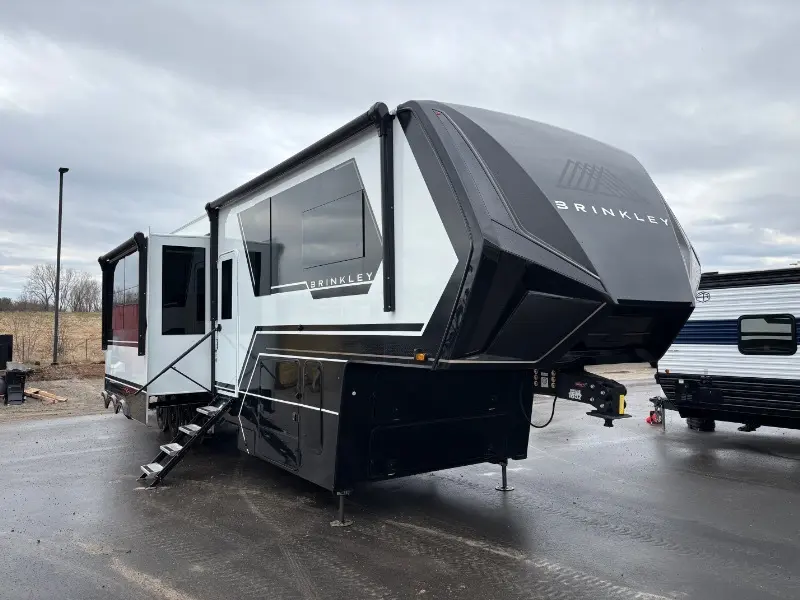The RV industry has always thrived on a spirit of adventure — and in 2025, that spirit is being reimagined with smarter, sleeker, and more sustainable designs than ever before. From tech-enhanced interiors to greener materials and hybrid drivetrains, the latest recreational vehicles are redefining how we travel and live on the road. Whether you’re a weekend wanderer or a full-time RVer, these innovations are making mobile living more efficient, comfortable, and future-ready.
1. Smart Technology Integration: RVs Go Fully Connected
The “smart home” trend has officially hit the road. Today’s RVs are designed with advanced connectivity features that allow travelers to control nearly every aspect of their vehicle through mobile apps or voice commands. Dealerships like RV Dynasty are showcasing 2025 models equipped with next-generation control systems that integrate lighting, temperature, and entertainment into one seamless interface — offering convenience that feels straight out of a luxury home.
Modern models also include AI-powered diagnostics that monitor engine health, battery levels, and water usage in real time — ensuring you’re always a step ahead of maintenance issues. With built-in 5G routers and satellite internet options, staying connected during cross-country trips has never been easier. These advancements cater perfectly to digital nomads and remote workers who want reliable access while exploring off-grid locations.
2. Eco-Friendly Materials and Sustainable Design
Sustainability is no longer an afterthought in RV design — it’s a driving force. Manufacturers in 2025 are increasingly adopting recycled, lightweight, and non-toxic materials to reduce environmental impact without compromising durability or style.
Cabinetry and flooring now feature sustainable wood alternatives, while upholstery uses recycled fabrics and eco-friendly dyes. Roof panels and walls are being constructed with advanced composites that improve insulation, leading to greater energy efficiency on the road.
Solar integration has also become a norm rather than a luxury. Built-in solar panels, enhanced battery storage systems, and efficient inverter technologies are empowering RV owners to go off-grid for longer periods — all while reducing fuel dependency and carbon emissions.
3. Modular and Space-Savvy Interiors
Maximizing space without sacrificing comfort is one of the biggest design challenges in the RV world — and 2025 models are tackling it with creativity and precision.
Modular interiors now allow owners to customize layouts according to their travel style. Convertible furniture, retractable beds, and expandable kitchen systems are becoming standard, offering more flexibility for different lifestyles. Some models feature “transformable zones” that can shift from a workspace during the day to a sleeping area at night, ideal for those embracing van life or remote work setups.
The rise of multi-functional designs reflects a growing demand for RVs that serve as both a home and a mobile office. Innovative storage systems, hidden compartments, and adjustable shelving are making every square inch count — giving modern RVs a sense of spacious luxury once thought impossible.
4. Advanced Powertrains and Hybrid Efficiency
In 2025, the evolution of RV powertrains is one of the most exciting areas of innovation. With growing concerns over fuel efficiency and emissions, manufacturers are introducing hybrid and fully electric RVs designed for extended travel with reduced environmental impact.
Hybrid RVs combine internal combustion engines with electric drivetrains, offering improved mileage and lower emissions. Meanwhile, all-electric RVs — equipped with high-capacity lithium-ion batteries — are entering the market with impressive ranges and fast-charging capabilities.
Even traditional gas and diesel RVs have seen major upgrades in engine optimization, aerodynamics, and regenerative braking. These advancements not only enhance performance but also make RVing more cost-effective and sustainable in the long run.
5. Enhanced Safety and Comfort Features
Today’s travelers demand both comfort and security — and 2025 RVs are rising to meet that demand. New safety systems like adaptive cruise control, lane-keeping assistance, and collision avoidance are now standard in many premium models. Some RVs even integrate 360-degree cameras and automated parking assistance, making large vehicles easier to maneuver in tight spots.
Comfort-wise, expect more ergonomic designs, noise-reduction technology, and climate-controlled zones tailored for different parts of the RV. Heated floors, ambient lighting, and air purification systems are transforming interiors into cozy, health-conscious living spaces.
Manufacturers are also emphasizing user experience — ensuring that every journey feels as relaxing as the destination itself.
Conclusion
The RV industry’s transformation in 2025 is a testament to how far technology, design, and sustainability have come together to reshape travel. From smart automation and hybrid engines to eco-conscious interiors, these innovations promise a more connected and responsible way to explore the open road.
Keep an eye for more latest news & updates on Real Erome!



